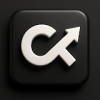Micro futures (MES, MNQ, etc.) let you trade index contracts at 1/10 size of E-minis offering lower margin, more granular scaling, and smoother risk control. Here’s why they’re rapidly becoming the preferred tool for prop traders.
Micro Futures (MES/MNQ) and Why They Are the Future of Prop Trading
Micro E-mini futures, such as MES or MNQ, replicate standard index futures contracts but at one tenth the size. They let traders access major indices with far smaller capital requirements, lower risk per contract, and more flexibility in scaling positions. (CME Group endorses micro e-mini products as a tool for precise index exposure.)
Contract Size & Margin Benefits
Because micro futures are 1/10th the size of an E-mini contract, their notional exposure and margin requirement are also reduced. For example, a micro S&P contract corresponds to $5 per index point versus $50 for a standard E-mini.
Lower margin requirements make these contracts accessible to traders with smaller capital, reducing barrier to entry while retaining full index exposure.
Strategy Fit & Scalability
Micro contracts allow finer scaling. Instead of stepping from 1 contract to 2, you could add 1–2 micros at a time. This precision helps risk adjust more smoothly. AMP Global notes micros let you scale out and stay in winning trades longer.
Also, strategies that work on E-minis often translate directly to micro futures—same logic, less skin in the game.
Liquidity & Market Access
Micro e-mini futures trade on the same exchanges and platforms as E-minis, offering deep liquidity and near 24-hour access.
They also allow more precise hedging and incremental position management across market moves.
Potential Drawbacks & Trade Offs
Because micro futures are smaller, slippage and commission impact may proportionally be more visible, especially in very short-term strategies.
Also, aggregated costs (commissions, platform fees) must be low enough not to eat your edge when trading many micro contracts.
FAQs
What indices are available in micro futures?
Micro E-mini products cover indices like S&P 500, Nasdaq-100, Russell 2000, and Dow.
Are micro futures interchangeable with E-minis?
Yes. Micro contracts are offset-eligible against E-minis at a 10:1 ratio.
Do micro futures require lower capital?
Yes. Lower margin and smaller exposure make them ideal for smaller accounts.
Can strategies for E-minis be used on micros?
In most cases yes. Many strategies scale down proportionally to trade micro futures.











